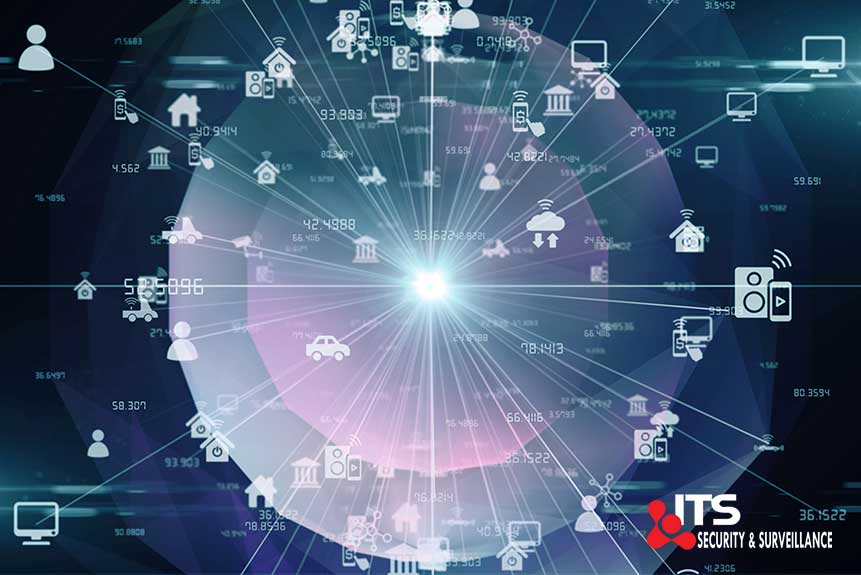When it comes to security systems, most of the attention often goes to cameras, access control devices or alarms. But behind the scenes, the cabling infrastructure that connects all these components plays an equally important role. Without a strong backbone, even the most advanced CCTV cameras or access control systems can suffer from poor performance and reliability issues.
In recent years, fiber optics has become the preferred choice for high-performance security networks, gradually replacing traditional copper cabling in many applications. But is it time for your organization to make the switch? Let’s explore why fiber optics matters and how it can strengthen the future of your security system.
Why Fiber Optics Is Gaining Ground in Security
Fiber optic cabling uses light instead of electrical signals to transmit data, offering clear advantages for CCTV installation, access control and video surveillance systems. Unlike copper, which is limited in speed and distance, fiber delivers:
- High bandwidth– essential for modern high-resolution CCTV feeds, which often require large amounts of data to be transmitted without lag.
- Faster speeds– supporting real-time video streaming and seamless integration of multiple devices across a property or facility.
- Greater distances– fiber can transmit data over kilometres without significant loss, making it ideal for larger sites such as residential communities, office complexes, or industrial facilities.
For companies that rely on uninterrupted monitoring, these benefits translate into higher security and peace of mind.
The Limitations of Copper Cabling
Copper cabling has been the standard for decades, and while it still works well for smaller or less demanding systems, it comes with limitations:
- Signal degradation over distance– the further the cable runs, the weaker the signal becomes.
- Lower bandwidth– copper struggles with today’s high-definition CCTV solutions, especially when multiple cameras are streaming simultaneously.
- Electromagnetic interference (EMI)– copper is more vulnerable to interference from other equipment, which can cause distortions or outages in security feeds.
In short, copper can handle smaller systems, but as businesses expand and security demands grow, it can quickly become a bottleneck.
Fiber Optics vs. Copper: A Quick Comparison
| Feature | Fiber Optics | Copper Cabling |
| Speed & Bandwidth | Extremely high, supports HD/4K video | Limited, may lag under heavy loads |
| Distance | Up to kilometers with no major signal loss | Best for short runs (100m or less) |
| Durability | Resistant to weather, fire, and EMI | Prone to interference and corrosion |
| Cost | Higher upfront, lower maintenance | Lower upfront, higher long-term costs |
Hybrid Systems: The Best of Both Worlds?
Not every organization needs to rip out existing copper networks and start fresh with fiber. In many cases, a hybrid approach works best. For example:
- Fiber can be used for the backbone of the system, supporting long-distance, high-capacity data transmission.
- Copper can still serve in shorter, localized connections where cost efficiency is more important.
This flexibility allows businesses to balance budget considerations with performance needs.

Why Your Network Infrastructure Matters More Than Ever
Security systems today aren’t just about cameras on a wall. They’re interconnected ecosystems that include:
- CCTV solutionswith high-resolution video streaming
- Access control systemsrequiring constant uptime
- Intruder alarms and monitoring platformsthat rely on fast, stable connectivity
If the backbone of this network is weak, the entire system suffers. That’s why many SIRA certified security companies now recommend fiber optics for organizations planning new installations or major upgrades.
Is It Time to Upgrade?
If your business is expanding, struggling with lagging video feeds, or planning to install advanced surveillance systems, fiber optics may be the smarter long-term investment. While the upfront cost can be higher, the payoff comes in:
- Reliable, uninterrupted monitoring
- Future-proof infrastructure that supports evolving security needs
- Reduced risk of costly downtime or failures
How ITS Sands Can Help
At ITS Sands, we specialize in designing and implementing robust security infrastructure that supports your long-term needs. As a SIRA approved service provider, we can assess your existing setup, advise whether fiber optics is the right move, and deliver expert installation tailored to your property, company or office.
👉 Contact us today to see how we can help strengthen your security system with modern, future-proof solutions.



